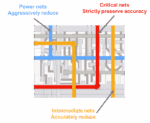Matthew Addley is an Industry Strategist at Infor, specializing in the global manufacturing sector. With over 30 years of experience in driving business transformation through technology, he aligns industry needs with Infor’s product strategy through thought leadership, customer engagement, and market insight. Beginning his career in the UK aerospace and defence industry, Matthew now spends much of his time in the Asia Pacific region operating from his home office in Sydney, Australia, bringing a global perspective across mature and emerging markets in ERP, manufacturing and supply chain excellence, and the increasing value of platform technologies.
What are the common supply chain and operational challenges you see among your customers?
Across industries and regions, a recurring theme we hear about is the difficulty of achieving true collaboration throughout the supply chain. Interestingly, the specific pain points can differ depending on where you’re located. For example, in the U.S., customers will often say, “Our suppliers aren’t collaborating with us,” while in Thailand, the sentiment is flipped: “Our customers aren’t collaborating with their suppliers.” The underlying issue (a breakdown in coordinated communication) is consistent, but perceptions of where the problem originates shift depending on regional context.
Another major challenge is the need to respond quickly and efficiently to change. The need for resilience and responsiveness has never been higher, as global supply chains continue to face geopolitical disruptions and lingering fragility from past events. As a result, organizations are under pressure to adapt rapidly to changes in demand, supply shortages, and pricing fluctuations.
At the operational level, one challenge that’s often overlooked, but at the same time is incredibly impactful, is onboarding new employees on the shop floor. We’re seeing a massive generational knowledge shift, where the people with deep knowledge of processes are retiring or moving on, and that knowledge is often left undocumented. It becomes extremely difficult to maintain production efficiency when newer workers are left to figure things out on their own. We deliver enterprise applications to bridge that gap by making processes more visible and repeatable, turning experience into data that everyone can use.
Infor’s How Possible Happens report found that while 75% of global companies surveyed expect 20%+ gains from technology but our evidence suggests that, without the focus on bulletproof processes, agility, and customer-centricity that our solutions provide, many fail to reach their objectives. We partner to help organizations better anticipate and adapt to supply chain disruptions, proving that visibility and agility are more than buzzwords. They’re measurable outcomes.
What specific challenges or use cases have you seen in the semiconductor industry, and how are you helping customers address them?
The semiconductor industry faces unique challenges related to supply chain fragility and component sourcing. One specific issue is ensuring the consistent quality of highly specialized parts across different suppliers. Historically, many manufacturers relied on a single supplier to meet the necessary minimum order quantities. But that approach is becoming increasingly risky.
We enable what we call “true dual sourcing,” which is the ability to proactively manage multiple suppliers for the same part, rather than just defaulting to the one that offers the right quantity. More importantly, we track and manage quality and other performance measures across suppliers so that if a company shifts from one supplier to another, they can establish and maintain confidence in quality. We also allow customers to allocate supply based on historical performance, essentially increasing resilience.
In addition, we track parts beyond just the generic descriptors of form, fit, and function. We capture the manufacturer’s part number, which gives far more granular insight and allows our customers to know whether a part can be used in a highly specific application or only in a generic context. That’s critical in semiconductor manufacturing and downstream activities, where a seemingly identical part from two different sources might not behave the same way. With our system, customers gain the visibility they need to make those nuanced decisions.
One semiconductor manufacturer cited in the How Possible Happens report saw a 40% reduction in time spent on quality-related supplier follow-ups after implementing Infor’s solution, which is a great example of how precise data and supplier insights drive better decision-making.
Where does your solution outperform your competitors?
Where Infor really shines is in operations, especially in areas like production, supply chain planning, and execution.
We often hear from our customers that “our operations are cleaner and better with your solution.” That’s because we’re built with manufacturing and supply chain complexity in mind, not just financial reporting. In fact, our financial modules are strong enough to support global operations, but they don’t need to be over-engineered because we reduce the amount of rework required. We’re able to capture accurate data at the point of production, which flows directly into financial processes, minimizing the need for reconciliation.
The challenge for us is that CFOs are sometimes comfortable with Infor’s competitors. One of our goals is to reassure them that we’re not trying to immediately overhaul everything, especially not their core financial systems. Instead, we often coexist with them initially, while bringing real-time, detailed operational visibility to the production floor. That’s where we outperform: in helping customers operate more efficiently day-to-day.
And customers are seeing the difference: 64% of Infor users report improved operational efficiency within 12 months of go-live, underscoring our ability to drive immediate, meaningful value where it matters most.
How do you ensure flexibility while maintaining a prescriptive product approach?
We take a prescriptive approach where it makes sense, but we know that not every customer fits into a single mold. That’s why we maintain a verticalized product management structure. When a customer comes to us with a unique need, we first ask: “Is this a one-off requirement, or is it something we’re hearing across the industry?” If it’s a common issue, we’ll prioritize building it into the product roadmap. If it’s a one-off, we offer customization through cloud extensibility.
One key advantage of our platform is that customizations don’t break during upgrades. In many legacy ERP systems, custom code can derail an entire upgrade process, forcing customers to rework configurations every 6–12 months. With Infor, upgrades are seamless because we offer a tailored experience without sacrificing agility or incurring high maintenance costs. This is especially important for companies that need to adapt quickly while remaining within budget.
How does your partner ecosystem support customer success across different segments, from SMBs to large enterprises?
Our partner ecosystem is one of our most important assets. We work with a range of partners, from regional experts and boutique consulting firms to global systems integrators like Deloitte. These partners help us deliver localized, industry-specific support to customers of all sizes.
Infor’s CloudSuite solutions play a central role in enabling this success. Built on a multi-tenant cloud architecture, CloudSuite gives businesses of all sizes the ability to scale quickly, respond to market changes with agility, and gain real-time visibility into operations across the enterprise. Our partners are trained to leverage these capabilities to help customers drive faster time-to-value, reduce IT complexity, and improve transparency across the board.
For mid-market and enterprise clients, particularly in multi-tier manufacturing or semiconductor settings, we often operate in a “two-tier” ERP model: running on the shop floor while headquarters uses a different enterprise system. In these cases, our partners help ensure seamless data flow and coordination between the two systems.
For SMBs, our partners play a critical role in delivering fast, cost-effective implementations. These customers often don’t have large IT teams, so our partners step in as both implementers and ongoing advisors, sometimes even serving as virtual CIOs or COOs. The goal is to meet customers where they are and provide the right level of support based on their size, industry, and growth trajectory. And it’s working, with 79% of Infor customers saying that moving to CloudSuite helped them scale more quickly and respond to business changes with greater agility.
What is your approach to incorporating new technologies like AI and machine learning?
We don’t believe in handing customers a generic AI toolkit and saying, “Go figure it out.” Instead, we’re focused on delivering purpose-built, scenario-driven AI solutions that solve specific, tangible problems.
Take contract analysis in the electronics industry, for example. Service terms in these contracts are critical and comparing them manually is time consuming and error-prone. We’re using generative AI to help partners instantly analyze and compare service terms across contracts. This drastically reduces the time and effort required to make informed decisions, particularly in fast-moving environments where speed and accuracy are essential.
Infor Velocity Suite plays a key role in how we enable rapid, value-driven innovation. It provides a foundation of pre-built, industry-specific accelerators and extensible AI capabilities that help customers deploy and scale technology quickly without needing to start from scratch. With Velocity, we’re able to deliver advanced features like AI-driven supply chain planning, inventory optimization, and predictive maintenance in a way that’s tailored to each customer’s industry context.
We always prioritize practical value over hype. We’re not here to sell AI for AI’s sake. We’re here to make it work for our customers—in ways they can deploy today and see results from tomorrow.
Also Read:
CEO Interview with Shelly Henry of MooresLabAI
CEO Interview with Dr. Maksym Plakhotnyuk of ATLANT 3D
CEO Interview with Carlos Pardo of KD










